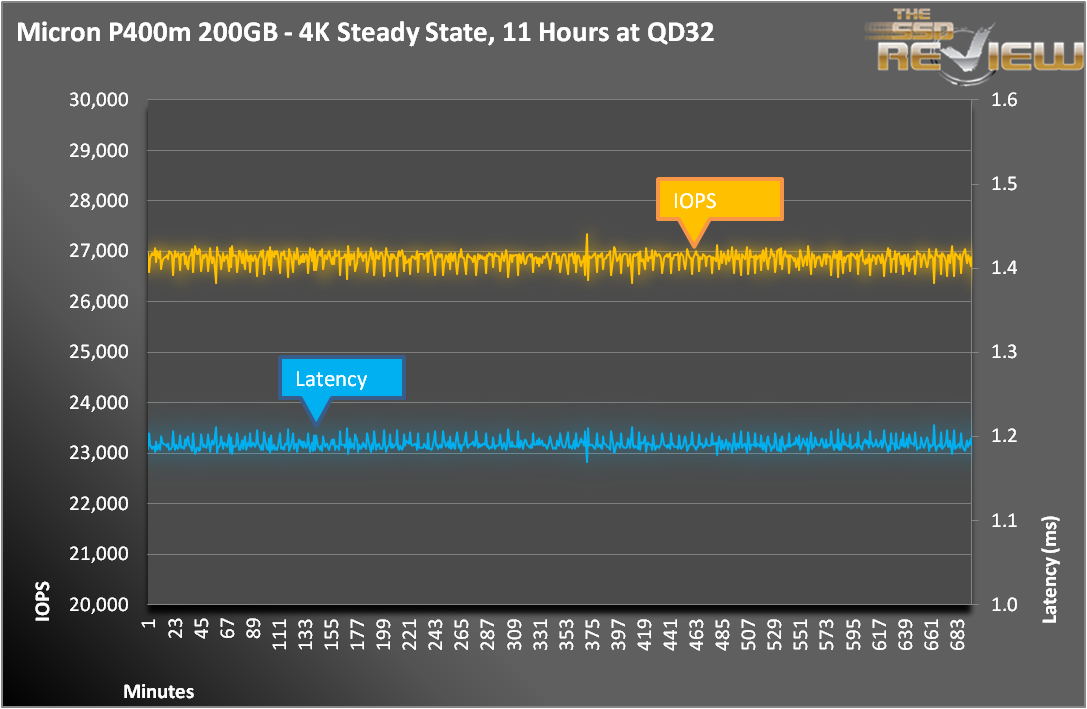ADVANCED WRITE TESTING
Regardless of the SSD vendor, there are 3 distinct performance states that a drive can be in. The first is fresh out of the box (FOB). Drives that are at FOB perform very well since the drive has not been subjected to any workload and the drive is mostly empty. Each time you write to the drive, the data is written immediately and there are no extra program/erase (P/E) cycles performed. Most SSDs stay in this state for ~1-3 full drive writes. Drives that supports TRIM can retain much of the FOB performance after a relatively short period of idle time.
Once a drive starts to exit FOB, it enters into an intermediate state. The number of P/E cycles start to stack up and while it still performs well, it is not quite FOB.
Finally, the drive will enter steady state. This is the point that we, as reviewers, and you, as enterprise customers, care about. At this point, the drives performance should not vary more than a few percent. In enterprise environments, the system architecture and workloads force the drive into steady state for an overwhelming majority of its life.
When we look at performance at a low level, the understanding is that we have already achieved steady state. With the following tests, we stressed the drive using random 4KB write workloads across the entire span for at least 24 hours. This is more than enough to achieve steady state. The following graph is showing the latency and IOPS across a 12 hour span
Even when we look at 1 minute averages, the P400m looks great. It is consistently performing better than it’s specifications. While 27,000 IOPS is still below the 32,000 that we observed with the Intel SSD DC S3700, it still performed very well. So why would Micron specify the typical write latency at 2ms? Lets zoom in on the data so that we are looking at 1s averages.
As you can see, the vast majority (90%) are below 1.3ms and there are about 2.5% of writes that are above that 2ms specification. Consistency wise, this is one of the best performing drives on the market. The bad news is it is still slightly worse than the Intel offering.
With that said, it is refreshing to see so many companies commit to performance consistency. This is an area that has been ignored for far too many years. Our hope is that we start to see the same trend on the consumer side of the market as well.
 The SSD Review The Worlds Dedicated SSD Education and Review Resource |
The SSD Review The Worlds Dedicated SSD Education and Review Resource | 

